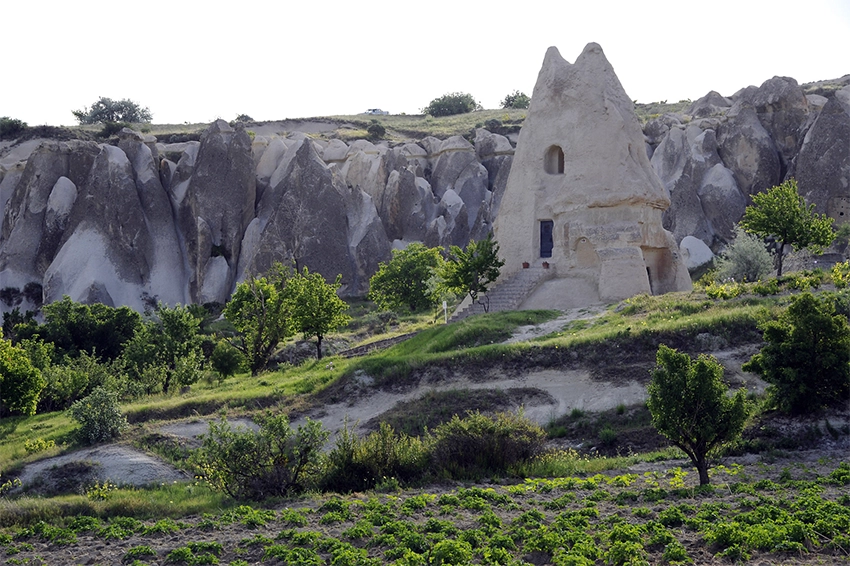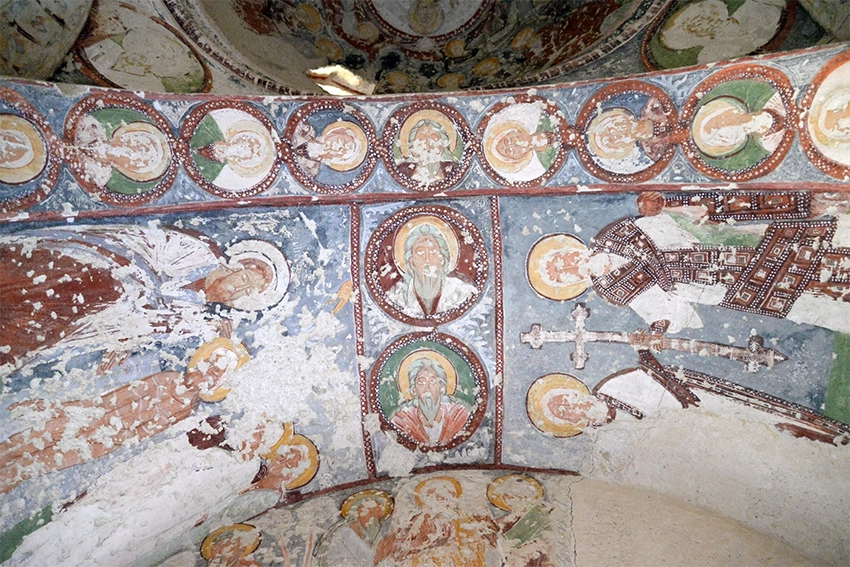El Nazar Church
El Nazar Church – A Unique Rock-Cone Sanctuary in Cappadocia
Introduction
Hidden within a natural rock cone in Cappadocia’s Göreme Valley, El Nazar Church is one of the region’s most distinctive early Christian sanctuaries. Unlike most rock-hewn chapels carved into valley walls, this church was cut directly into a standalone tuff cone, giving it its unique appearance and name, which means “Evil Eye” in Turkish.

History
El Nazar Church dates to the 10th century Byzantine period and is believed to have served a small monastic community in the Göreme area. Its isolated position within a natural cone offered both protection and seclusion, ideal for religious retreats. The church was rediscovered and restored in the late 20th century and has since been open to visitors as part of the Göreme Open-Air Museum network.
Architecture
The church follows a single-nave barrel-vaulted plan with a semicircular apse at the eastern end. Despite its modest size, the interior walls and ceiling are richly decorated with painted plaster. The carved space retains traces of monastic use, including niches for lamps and devotional objects.
Frescoes and Iconography
The frescoes, painted in the 10th and 11th centuries, are vivid examples of Byzantine devotional art. Scenes include:
- The Annunciation and Nativity
- The Baptism of Christ
- The Crucifixion and Resurrection
- Various depictions of saints and apostles

The palette is dominated by earthy reds, ochres, and faded blues. Though some surfaces have eroded over time, many compositions remain legible and powerful in expression.
Visiting Information
- Location: About 800 meters southeast of Göreme Open-Air Museum, on the road to Avanos.
- Access: A short walk or drive from Göreme; parking is available near the site.
- Opening Hours: Typically 08:00–17:00 (check locally for seasonal changes).
- Tickets: Small entry fee; Museum Pass not always valid.
- Photography: Allowed without flash; tripods are restricted due to the small interior space.
Visitor Tips
- The church is compact, so visit early to enjoy a quiet atmosphere.
- Wear comfortable shoes; the approach path may be uneven.
- Combine your visit with the nearby Saklı Church, which shares similar iconographic themes.
- Midday light is best for photographing the cone-shaped exterior against Cappadocia’s sky.
Conclusion
El Nazar Church is a rare example of a cone-carved chapel, blending Cappadocia’s surreal geology with Byzantine spirituality. For travelers seeking hidden gems beyond the main museum complex, it offers both tranquility and a deep sense of history.



